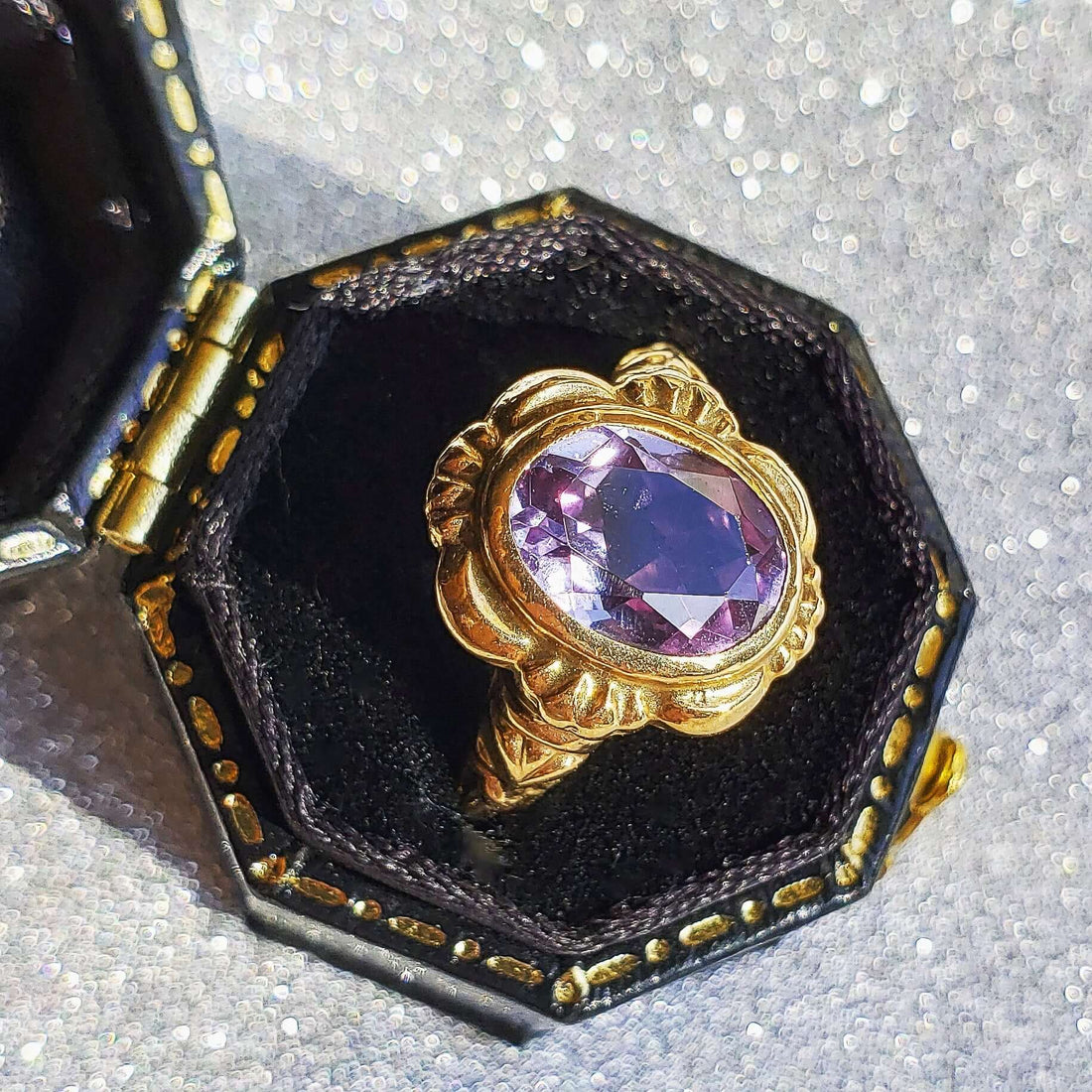
Art Deco Jewelry: Part 3 the 1940s
by Dani Chavez
Retro jewelry, or cocktail jewelry, was popular in the late 1930s and 1940s. Large and colorful statement pieces characterize it.

Retro Rings and Bracelets. Image: The Gemmary
The 1940s began with a significant event—the world was engulfed in war, significantly impacting the jewelry industry. Skilled artisans were lost to battle, manufacturing plants were converted to bomb-making, trade routes were disrupted, metal was rationed, and additional taxes were levied on jewelry. As a result, the European industry faced numerous challenges. However, Americans managed to advance towards innovation in jewelry manufacturing.

WWII Sweetheart Bracelets. Image: The Gemmary
During the Nazi occupation of Paris, most jewelry houses were forced to shut down. However, a few well-established places, like Cartier, continued their operations. Cartier created a unique brooch that featured a caged bird to symbolize the oppressive occupation. After the Liberation, the brand opened the cage and set the bird free, symbolizing hope and freedom.
In the early 1940s, most jewelry was made of yellow gold and silver. White metals such as platinum, nickel, and white gold were restricted due to their use in weapon making. Unlike the ornate and encrusted style of the 1930s, jewelers focused on using one or two large gemstones in the 1940s. The demand for synthetic rubies increased rapidly as the gem trade in Burma stopped.

A Pearl and Lab Ruby Retro Ring. Image: The Gemmary
The trend in jewelry design during the 1930s was curved minimalism. However, in the 1940s, a new era of ultra-modern, futuristic designs emerged. The style progressed from flat, geometric patterns to textural 3D pieces. At the 1939 World’s Fair in New York, Van Cleef and Arpels were at the forefront of this new trend with their “ultra-modern” jewelry designs, which won the public over with their innovative and captivating style.
 Cartier "Tutti Frutti" Snake Bracelet. Image: Antique Trader
Cartier "Tutti Frutti" Snake Bracelet. Image: Antique Trader
Designers found natural inspiration, incorporating floral motifs, exotic animals, and birds into their collections. As a result, jewelry began to incorporate asymmetry, unusual gemstone cuts, and a sense of movement and spontaneity. Bouquets of gemstones in random clusters became a significant trend in jewelry design.
During World War II, the participation of many women in the workforce led to the adoption of stern and masculine fashion trends. Designers such as Chanel and Schiaparelli incorporated military-style designs into their clothing lines. To balance masculinity, jewelers created large and feminine pieces. Jewelry companies in America that were not affected by the war catered to their wealthy clientele by producing large and asymmetrical jewelry.
 Women Welders, Gary, Ind., 1943. Image: Margaret Bourke-White The LIFE Picture Collection/Shutterstock
Women Welders, Gary, Ind., 1943. Image: Margaret Bourke-White The LIFE Picture Collection/Shutterstock
In the post-war period, new materials and metals gained popularity. Green and rose gold became fashionable, and palladium was introduced. Palladium belongs to the platinum group and is known for its excellent durability and anti-corrosion properties. Moreover, less valuable gemstones like aquamarine, citrine, amethyst, and lab-grown synthetics were commonly found in larger sizes and clusters.
American costume jewelry companies had an edge during the war, and Providence, Rhode Island, was the hub of the industry’s most significant movement. Companies like Eisenberg, Trifari, and Miriam Haskell thrived with the emergence of a new female consumer. Women could finally afford to spend on themselves thanks to their jobs and disposable income. Necklines became deeper when Dior introduced the New Look in 1947, accompanied by the invention of the pencil skirt.

Retro Red Glass and Gold Plated Bow Necklace. Image: The Gemmary
One of the changes in engagement rings is the rise in popularity of the “illusion” setting. This setting, also called the “fishtail” setting, involves placing a round diamond in a square setting to create the illusion of a larger stone. It’s a bit like an angler telling the story of a fish that’s “this big” when, in reality, it’s much smaller.

1940s "Illusion" or "Fish Tale" Diamond Wedding Set. Image" The Gemmary
In Scandinavia, sculptor Henning Koppel led the development of a new sculptural style. This style was characterized by a clean, minimalist design, and silver was the preferred medium. The jewelry created during this period was robust and abstract, with rounded lines and soft corners. Georg Jensen was the most famous jeweler of this period and played a significant role in this movement.

Georg Jensen "Orchid" Brooch, 1940s. Image: Pinterest
During Europe's post-war recovery, a new trend of modernism emerged. The final phase of Art Deco design focused on the beauty and fancifulness of nature rather than the harsh realities of life. Unfortunately, many of these exquisite art pieces were melted down for their scrap value, making them rare. Although the retro period only lasted a decade, the innovations made during this time impacted the jewelry industry. They paved the way for the mid-century modern movement of the 1950s and 1960s.
Sources:
Bell, C Jeanenne. (2009) Answers to Questions About Old Jewelry. Lola, WI: Krause Publications.
Philips, Clare. (1996) Jewelry: From Antiquity to Present. New York, NY: Thames & Hudson.
